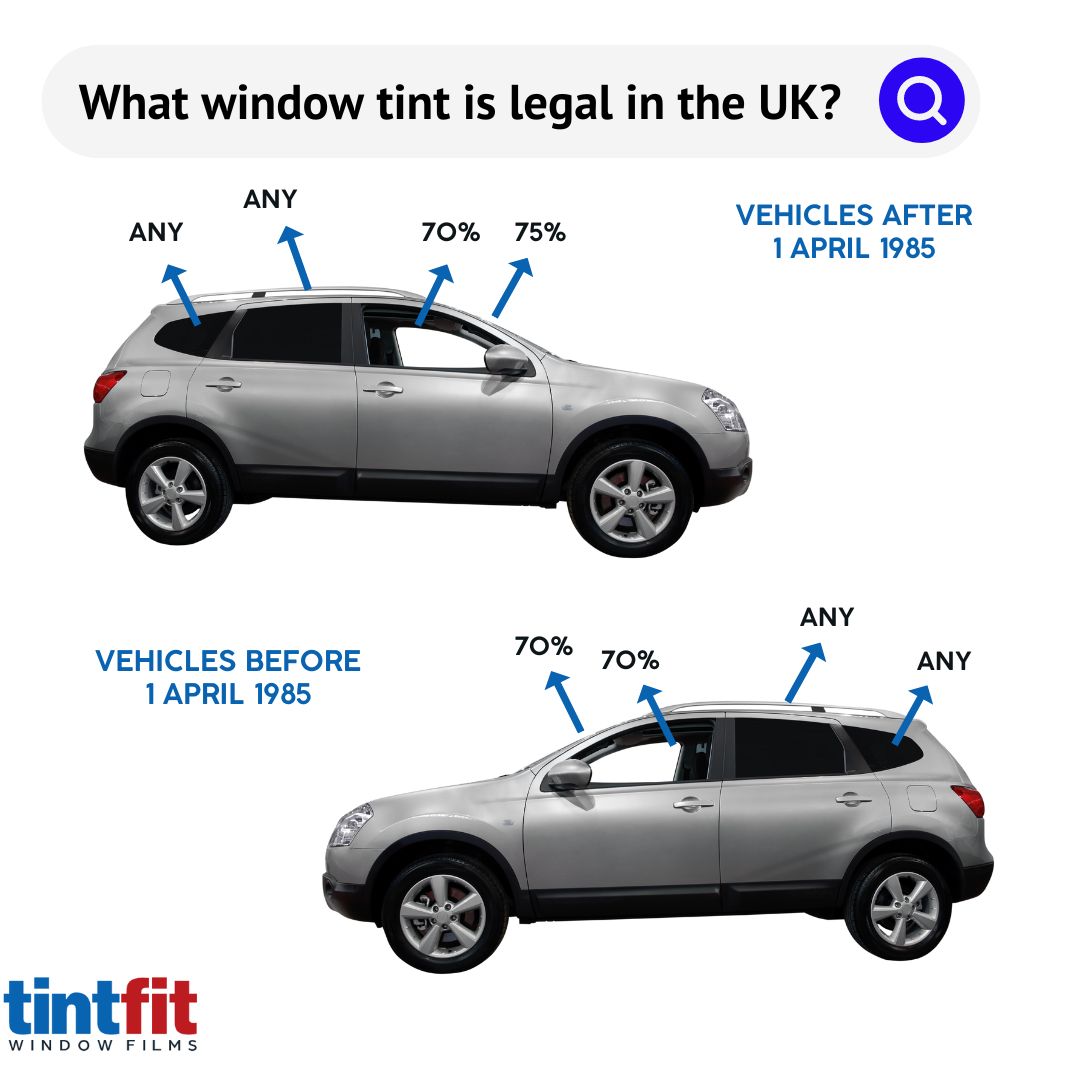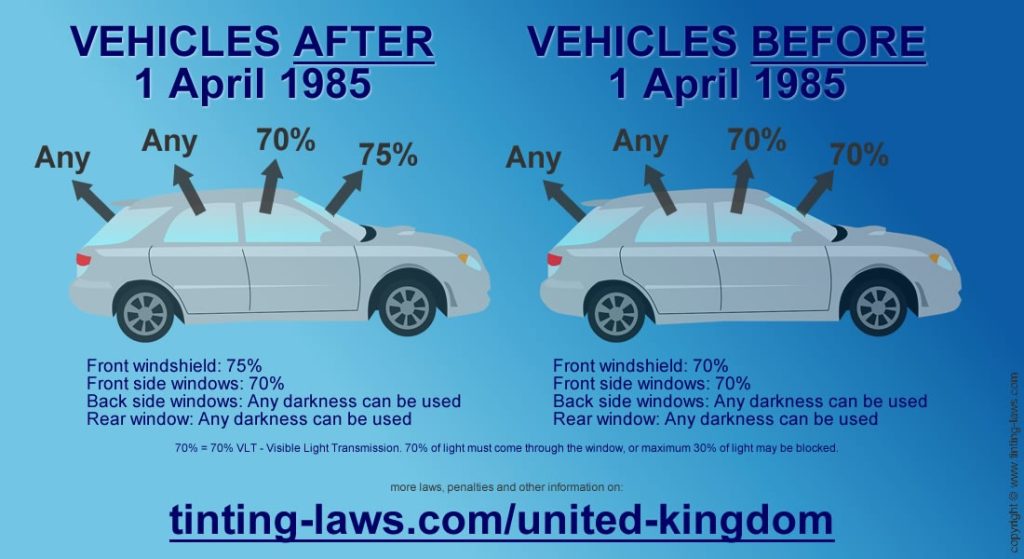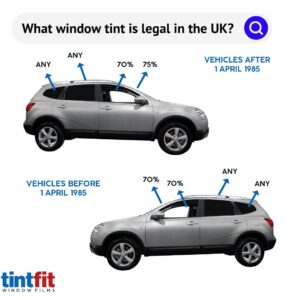As an Amazon Associate, I earn from qualifying purchases
Tinted car windows can look sleek. They also offer privacy and sun protection.
But did you know there are laws about window tinting? Understanding the laws about tinting car windows is important. Each state has its own rules. Some allow darker tints, while others don’t. Knowing these laws can save you from fines.
It can also ensure your car is safe to drive. In this post, we will explore the basics of these laws. We will explain why they exist and how they vary. This will help you make informed decisions about tinting your car windows. Stay tuned to learn more and keep your car legally tinted.
Introduction To Tinting Car Windows
Tinting car windows involves applying a thin film on the glass. This film can block UV rays and reduce glare. Many car owners choose this for various reasons. It is not only for looks but also for safety and comfort.
Before you decide to tint your car windows, it’s vital to know the laws. Different regions have different rules. Knowing these laws will help you avoid fines and penalties.
What Is Window Tinting?
Window tinting is the process of applying a thin film to a car’s windows. This film is usually made of polyester. It can be clear or colored. The main purpose is to block sunlight and reduce heat inside the car.
Benefits Of Window Tinting
Window tinting offers many benefits. It reduces glare from the sun, making driving safer. It also protects the car’s interior from fading. This means your seats and dashboard will look new for longer.
Tinted windows also provide privacy. People outside can’t see inside easily. This can help keep your belongings safe. Another benefit is the reduction of heat. Tinted windows can keep your car cooler on hot days.
Lastly, window tinting can block harmful UV rays. These rays can cause skin damage. With tinted windows, you have better protection. This is especially important for long drives.
Legal Regulations
Tinting your car windows is popular for privacy and UV protection. But laws regulate how dark you can go. These laws vary at fthe ederal and state levels. Understanding these regulations helps you avoid fines.
Federal Laws
The federal government sets baseline rules for car window tinting. These laws aim to ensure driver visibility and road safety. The key requirement is that windshields must allow more than 70% of light to pass through. This ensures drivers can see clearly.
Other windows, like side and rear windows, have less strict rules. But they still need to maintain a minimum level of visibility. These federal standards serve as a foundation for state laws.
State-specific Laws
State laws on window tinting vary widely. Some states allow darker tints, while others have stricter limits. It is crucial to check your state’s specific regulations. Below is a table showing how different states regulate window tinting:
| State | Windshield | Front Side Windows | Back Side Windows | Rear Window |
|---|---|---|---|---|
| California | 70% VLT | 70% VLT | Any | Any |
| Florida | 28% VLT | 28% VLT | 15% VLT | 15% VLT |
| Texas | 25% VLT | 25% VLT | 25% VLT | 25% VLT |
VLT stands for Visible Light Transmission. It measures the amount of light that passes through the window film. A higher percentage means more light passes through. Always verify the latest regulations for your state.
Some states also have additional rules. For example, New York requires dual side mirrors if the rear window is tinted. Be aware of these extra laws to stay compliant.
Types Of Window Tints
Choosing the right window tint for your car can be tricky. There are several types of window tints, each with its own benefits. Understanding these can help you make the best decision. Here are the main types of window tints you can consider:
Dyed Window Tint
Dyed window tint is the most affordable option. It uses a layer of dye to block sunlight. This type of tint can reduce glare and heat. It also provides a dark look, which enhances privacy. However, dyed tint can fade over time and is less durable.
Metalized Window Tint
Metalized window tint contains tiny metallic particles. These particles reflect heat and UV rays. This type of tint is more durable than dyed tint. It also provides a shiny appearance. A key benefit is its ability to strengthen the window. But it can interfere with GPS and cell phone signals.
Ceramic Window Tint
Ceramic window tint is the most advanced option. It uses ceramic particles to block heat and UV rays. This tint does not fade over time and is highly durable. It also provides excellent visibility. Unlike metalized tints, ceramic does not interfere with electronics. It is, however, the most expensive option.
| Type of Tint | Benefits | Drawbacks |
|---|---|---|
| Dyed Window Tint |
|
|
| Metalized Window Tint |
|
|
| Ceramic Window Tint |
|
|

Credit: www.tintfit.com
Tint Darkness Limits
Understanding the laws surrounding tint darkness limits is crucial for car owners. These laws help ensure safety and compliance on the road. Different states have different regulations. This guide will help you navigate the common aspects of these laws.
Visible Light Transmission (VLT)
Visible Light Transmission (VLT) refers to the amount of light that passes through your car windows. The percentage of VLT allowed varies by state. For example, a 70% VLT means 70% of the outside light can enter the car.
Here is a table summarizing the common VLT percentages:
| State | Front Windows VLT | Rear Windows VLT |
|---|---|---|
| California | 70% | Any |
| Texas | 25% | 25% |
| Florida | 28% | 15% |
Front Vs. Rear Windows
The laws often differ between front and rear windows. States usually have stricter limits for front windows. This ensures that drivers have a clear view of the road.
For example:
- In California, front windows must allow at least 70% VLT.
- Rear windows can have any level of tint.
In contrast, some states have uniform VLT requirements for all windows. Texas requires a minimum of 25% VLT for both front and rear windows.
Always check local regulations to ensure compliance with tint laws. This will help you avoid fines and ensure safe driving conditions.
Medical Exemptions
In some states, car window tinting laws provide medical exemptions. These exemptions help people with certain health conditions. They allow them to use darker window tints for protection.
Qualifying Conditions
Certain medical conditions qualify for these exemptions. These conditions include:
- Lupus
- Skin cancer
- Photosensitivity
- Albinism
- Porphyria
These health issues make people more sensitive to sunlight. Darker tints can help protect their skin and eyes.
Application Process
The application process for a medical exemption involves several steps. Here’s a simple guide:
- Get a signed statement from your doctor. This statement should explain your condition and need for darker tints.
- Fill out the exemption form. You can usually find this form on your state’s Department of Motor Vehicles (DMV) website.
- Submit the form and doctor’s statement to the DMV. Some states may require a processing fee.
- Wait for approval. Once approved, you will receive an exemption certificate.
Keep your certificate in your car. This way, you can show it to law enforcement if needed.

Credit: www.tinting-laws.com
Penalties For Non-compliance
Not following the car window tinting laws can have serious consequences. You could face fines, tickets, and other penalties. Make sure your car windows follow the law to avoid these issues.
Fines And Tickets
If your car windows are too dark, you may receive a ticket. The fines for this violation can vary. In some states, you might pay $100. In others, the fine could be $200 or more.
| State | Fine Amount |
|---|---|
| California | $197 |
| New York | $150 |
| Texas | $200 |
Repeat offenders may face higher fines. Some states also add points to your driving record. This can affect your insurance rates.
Impact On Vehicle Inspections
Window tinting can also affect vehicle inspections. Many states require cars to pass an inspection each year. If your windows are too dark, your car might fail.
- You will need to remove the tint.
- You may have to pay for a re-inspection.
- This can cost both time and money.
Some states have more strict inspection laws than others. Check your state’s rules to be sure your car will pass.
Tips For Legal Tinting
Tinting car windows can be a stylish upgrade. Yet, you need to follow the law. Below are some tips for legal tinting to ensure you stay compliant while enjoying the benefits of tinted windows.
Choosing The Right Tint
Choosing the right tint is crucial. Not all tints are legal in every state. Check your state’s specific tinting laws. Many states have limits on how dark the tint can be. These limits are often measured as a percentage of visible light transmission (VLT).
| State | Front Side Windows | Back Side Windows | Rear Window |
|---|---|---|---|
| California | 70% VLT | Any | Any |
| New York | 70% VLT | 70% VLT | 70% VLT |
| Florida | 28% VLT | 15% VLT | 15% VLT |
Use the table to compare different states’ VLT requirements. This helps you make an informed choice. Also, consider the purpose of your tint. If you want privacy, a darker tint might be best. For UV protection, look for tints that block UV rays effectively.
Working With Professionals
Working with professionals ensures your tint is applied correctly. Professional installers know the law. They can guide you on the best options. They also have the right tools and materials. This ensures a smooth, bubble-free application.
Here are some tips for finding a good professional:
- Check Reviews: Look at online reviews. They provide insight into the quality of work.
- Ask for Certifications: Certified professionals are often more reliable.
- Get a Quote: Ask for a detailed quote. This helps you understand the cost and what it includes.
A professional tint job usually comes with a warranty. This can save you money if the tint peels or bubbles. Plus, professionals can offer advice on how to care for your tinted windows. This extends the life of your tint and keeps it looking good.

Credit: www.tintfit.com
Frequently Asked Questions
What Is The Legal Tint Percentage For Car Windows?
The legal tint percentage varies by state or country. Typically, it ranges from 30% to 50%. Always check local regulations.
Are Tinted Windows Allowed On All Car Windows?
Tinted windows are usually allowed on side and rear windows. Front windshield and front side windows often have stricter limits.
Can You Get Pulled Over For Window Tint?
Yes, you can get pulled over if your window tint violates local laws. Ensure your tint complies with regulations.
How To Check If Window Tint Is Legal?
Use a tint meter to measure the light transmission percentage. Compare it with your local laws to ensure compliance.
Conclusion
Understanding car window tinting laws is essential for every driver. Following these rules ensures safety and compliance. Each state has different regulations. Check your local laws before tinting. Proper knowledge prevents fines and legal issues. Stay informed and drive safely with legal tinting.
Always prioritize safety and legality on the road.
As an Amazon Associate, I earn from qualifying purchases


